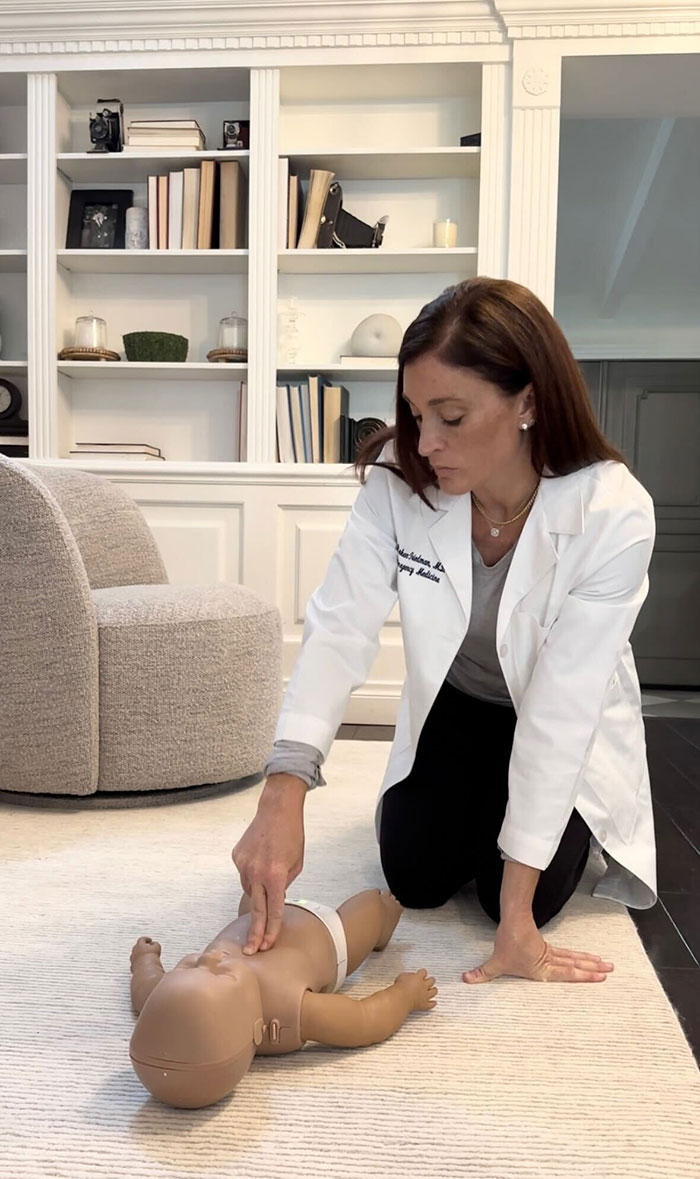
Common Mistakes Parents Make Regarding CPR
What is one of the best investments you can make as a parent? As an ER pediatrician, my answer will always be first aid and CPR certification. Educating yourself and obtaining these vital skills could literally save your child’s life. In many situations, any delay in providing CPR often greatly reduces the chance for resuscitation and survival.
Common CPR Mistakes
As an ER pediatrician, I see emergency situations every single day. And throughout the years of seeing parents’ worst nightmares play out, I’ve noticed a few things we all need to take note of and improve upon. Today, I want to discuss six common mistakes parents make regarding first aid and CPR.
#1 Not Obtaining Official CPR Certification
Parents sometimes have a false sense of security that taking a general baby course at the hospital before their baby arrives is sufficient when it comes to survival technique and CPR. Many times, these types of classes give you an overview of the different obstacles you may face or skillsets you may need as a new parent, such as breastfeeding, CPR, bathing, swaddling, and basic life skills.
These classes, although incredibly informative, can be overwhelming. They are chock-full of information within a short period of time.
But in reality, nothing is more important than spending an hour of your time to completely focus on what to do if your child is unresponsive or needs CPR. No general baby class will equal taking the time to get properly certified in CPR.
#2 Not Starting CPR Immediately
When a baby or child appears limp or blue, many parents become scared. They are often paralyzed with fear and do not initiate CPR quickly enough. Here is a good rule of thumb when making a split-second decision to save your child’s life:
- Do you see their chest rising?
- Is the child blue in the face?
- Does the child respond to foot stimulation?
If the child is unresponsive, call 911 immediately and then begin CPR. Do not wait any longer – every second counts when your child is unresponsive.
#3 Not Performing CPR on the Correct Surface
Oftentimes, parents or caregivers find a child or baby unresponsive on a bed or in a crib. These surfaces are NOT ideal for providing adequate CPR. Quickly transport the child to a hard surface, such as the floor. To properly administer CPR, you will need to avoid soft surfaces, such as mattresses, couches, cribs, or anything padded.
#4 Not Performing Chest Compressions Correctly
When initiating CPR, start with 30 chest compressions. Follow those compressions with two rescue breaths.
Chest compressions should also be deeper than you may think. When performing CPR on a small child or baby, many adults worry about breaking a rib or hurting the child. But pressing deep enough during chest compressions and completely releasing for recoil, allowing the chest to fully expand back out, is crucial.
When you’re dealing with life or death, an effective chest compression is more important than the risk of breaking your child’s rib.
#5 Not Maintaining First Aid and CPR Certification
One of the most common mistakes parents make is to only take one CPR course. As your baby gets older, you should be retraining in first aid and CPR.
As your child grows and their body changes, the technique for effective chest compressions changes as well. Similarly, the Heimlich maneuverer for choking emergencies also changes when your child reaches a certain age. It’s imperative to know that age and what technique is going to be most effective in these lifesaving moments.
#6 Not Ensuring All Caregivers Are CPR Certified
We’ve established over and over again why CPR certification is important for all parents, but it is also important for other caregivers to receive CPR training. For many parents, our children are not in our care 24/7. Our children spend many hours of the day in the care of someone else, whether a teacher, babysitter, nanny, or loved one, such as a grandparent, aunt, or uncle.
While you’re always a phone call away for the little things that pop up when your child is with another caregiver, in a life-threatening situation, every minute truly matters. Any adult you trust to keep your child while you are not there should be educated in lifesaving first aid and CPR techniques.
Final Thoughts on First Aid and CPR Certification
Nothing will provide you with more peace of mind than knowing that anyone watching your child, including yourself, knows what to do in an emergency situation.
No parent ever wants to think of the “what if?” scenarios. It’s hard for us visualize our child unconscious or unresponsive. But having the skills to save your child’s life in those critical minutes is something every parent needs to invest in. Don’t wait for the “what if?” to happen. In medicine, we often talk about being prepared for the unexpected. Be prepared, so you won’t make these common mistakes.
Please take a moment today to read about how you can easily become certified in CPR from the comfort of your home with a live instructor who will virtually coach you through the process and answer any questions you may have along the way.
Use code FOREVER22 for an additional discount when checking out.




